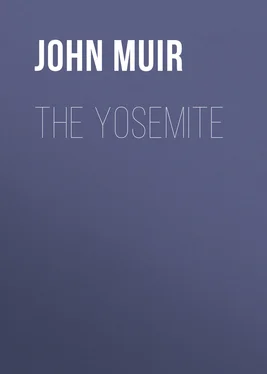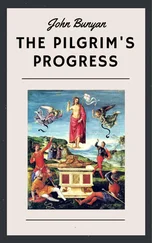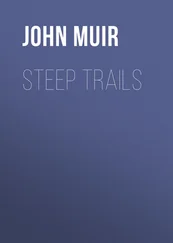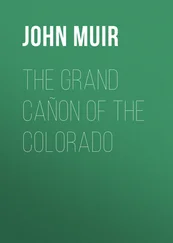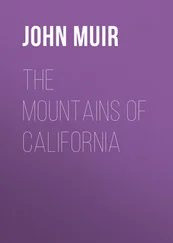John Muir - The Yosemite
Здесь есть возможность читать онлайн «John Muir - The Yosemite» — ознакомительный отрывок электронной книги совершенно бесплатно, а после прочтения отрывка купить полную версию. В некоторых случаях можно слушать аудио, скачать через торрент в формате fb2 и присутствует краткое содержание. Жанр: Путешествия и география, История, foreign_edu, foreign_antique, foreign_prose, на английском языке. Описание произведения, (предисловие) а так же отзывы посетителей доступны на портале библиотеки ЛибКат.
- Название:The Yosemite
- Автор:
- Жанр:
- Год:неизвестен
- ISBN:нет данных
- Рейтинг книги:3 / 5. Голосов: 1
-
Избранное:Добавить в избранное
- Отзывы:
-
Ваша оценка:
- 60
- 1
- 2
- 3
- 4
- 5
The Yosemite: краткое содержание, описание и аннотация
Предлагаем к чтению аннотацию, описание, краткое содержание или предисловие (зависит от того, что написал сам автор книги «The Yosemite»). Если вы не нашли необходимую информацию о книге — напишите в комментариях, мы постараемся отыскать её.
The Yosemite — читать онлайн ознакомительный отрывок
Ниже представлен текст книги, разбитый по страницам. Система сохранения места последней прочитанной страницы, позволяет с удобством читать онлайн бесплатно книгу «The Yosemite», без необходимости каждый раз заново искать на чём Вы остановились. Поставьте закладку, и сможете в любой момент перейти на страницу, на которой закончили чтение.
Интервал:
Закладка:
All summer-visitors will remember the comet forms of the Yosemite Fall and the laces of the Bridal Veil and Nevada. In the falls of this winter jubilee the lace forms predominated, but there was no lack of thunder-toned comets. The lower portion of one of the Sentinel Cascades was composed of two main white torrents with the space between them filled in with chained and beaded gauze of intricate pattern, through the singing threads of which the purplish-gray rock could be dimly seen. The series above Glacier Point was still more complicated in structure, displaying every form that one could imagine water might be dashed and combed and woven into. Those on the north wall between Washington Column and the Royal Arch Fall were so nearly related they formed an almost continuous sheet, and these again were but slightly separated from those about Indian Cañon. The group about the Three Brothers and El Capitan, owing to the topography and cleavage of the cliffs back of them, was more broken and irregular. The Tissiack Cascades were comparatively small, yet sufficient to give that noblest of mountain rocks a glorious voice. In the midst of all this extravagant rejoicing the great Yosemite Fall was scarce heard until about three o'clock in the afternoon. Then I was startled by a sudden thundering crash as if a rock avalanche had come to the help of the roaring waters. This was the flood-wave of Yosemite Creek, which had just arrived delayed by the distance it had to travel, and by the choking snows of its widespread fountains. Now, with volume tenfold increased beyond its springtime fullness, it took its place as leader of the glorious choir.
And the winds, too, were singing in wild accord, playing on every tree and rock, surging against the huge brows and domes and outstanding battlements, deflected hither and thither and broken into a thousand cascading, roaring currents in the cañons, and low bass, drumming swirls in the hollows. And these again, reacting on the clouds, eroded immense cavernous spaces in their gray depths and swept forward the resulting detritus in ragged trains like the moraines of glaciers. These cloud movements in turn published the work of the winds, giving them a visible body, and enabling us to trace them. As if endowed with independent motion, a detached cloud would rise hastily to the very top of the wall as if on some important errand, examining the faces of the cliffs, and then perhaps as suddenly descend to sweep imposingly along the meadows, trailing its draggled fringes through the pines, fondling the waving spires with infinite gentleness, or, gliding behind a grove or a single tree, bringing it into striking relief, as it bowed and waved in solemn rhythm. Sometimes, as the busy clouds drooped and condensed or dissolved to misty gauze, half of the Valley would be suddenly veiled, leaving here and there some lofty headland cut off from all visible connection with the walls, looming alone, dim, spectral, as if belonging to the sky–visitors, like the new falls, come to take part in the glorious festival. Thus for two days and nights in measureless extravagance the storm went on, and mostly without spectators, at least of a terrestrial kind. I saw nobody out–bird, bear, squirrel, or man. Tourists had vanished months before, and the hotel people and laborers were out of sight, careful about getting cold, and satisfied with views from windows. The bears, I suppose, were in their cañon-boulder dens, the squirrels in their knot-hole nests, the grouse in close fir groves, and the small singers in the Indian Cañon chaparral, trying to keep warm and dry. Strange to say, I did not see even the water-ouzels, though they must have greatly enjoyed the storm.
This was the most sublime waterfall flood I ever saw–clouds, winds, rocks, waters, throbbing together as one. And then to contemplate what was going on simultaneously with all this in other mountain temples; the Big Tuolumne Cañon–how the white waters and the winds were singing there! And in Hetch Hetchy Valley and the great King's River yosemite, and in all the other Sierra cañons and valleys from Shasta to the southernmost fountains of the Kern, thousands of rejoicing flood waterfalls chanting together in jubilee dress.
Chapter 3
Snow-Storms
As has been already stated, the first of the great snow-storms that replenish the Yosemite fountains seldom sets in before the end of November. Then, warned by the sky, wide-awake mountaineers, together with the deer and most of the birds, make haste to the lowlands or foothills; and burrowing marmots, mountain beavers, wood-rats, and other small mountain people, go into winter quarters, some of them not again to see the light of day until the general awakening and resurrection of the spring in June or July. The fertile clouds, drooping and condensing in brooding silence, seem to be thoughtfully examining the forests and streams with reference to the work that lies before them. At length, all their plans perfected, tufted flakes and single starry crystals come in sight, solemnly swirling and glinting to their blessed appointed places; and soon the busy throng fills the sky and makes darkness like night. The first heavy fall is usually from about two to four feet in depth then with intervals of days or weeks of bright weather storm succeeds storm, heaping snow on snow, until thirty to fifty feet has fallen. But on account of its settling and compacting, and waste from melting and evaporation, the average depth actually found at any time seldom exceeds ten feet in the forest regions, or fifteen feet along the slopes of the summit peaks. After snow-storms come avalanches, varying greatly in form, size, behavior and in the songs they sing; some on the smooth slopes of the mountains are short and broad; others long and river-like in the side cañons of yosemites and in the main cañons, flowing in regular channels and booming like waterfalls, while countless smaller ones fall everywhere from laden trees and rocks and lofty cañon walls. Most delightful it is to stand in the middle of Yosemite on still clear mornings after snow-storms and watch the throng of avalanches as they come down, rejoicing, to their places, whispering, thrilling like birds, or booming and roaring like thunder. The noble yellow pines stand hushed and motionless as if under a spell until the morning sunshine begins to sift through their laden spires; then the dense masses on the ends of the leafy branches begin to shift and fall, those from the upper branches striking the lower ones in succession, enveloping each tree in a hollow conical avalanche of fairy fineness; while the relieved branches spring up and wave with startling effect in the general stillness, as if each tree was moving of its own volition. Hundreds of broad cloud-shaped masses may also be seen, leaping over the brows of the cliffs from great heights, descending at first with regular avalanche speed until, worn into dust by friction, they float in front of the precipices like irised clouds. Those which descend from the brow of El Capitan are particularly fine; but most of the great Yosemite avalanches flow in regular channels like cascades and waterfalls. When the snow first gives way on the upper slopes of their basins, a dull rushing, rumbling sound is heard which rapidly increases and seems to draw nearer with appalling intensity of tone. Presently the white flood comes bounding into sight over bosses and sheer places, leaping from bench to bench, spreading and narrowing and throwing off clouds of whirling dust like the spray of foaming cataracts. Compared with waterfalls and cascades, avalanches are short-lived, few of them lasting more than a minute or two, and the sharp, clashing sounds so common in falling water are mostly wanting; but in their low massy thundertones and purple-tinged whiteness, and in their dress, gait, gestures and general behavior, they are much alike.
Читать дальшеИнтервал:
Закладка:
Похожие книги на «The Yosemite»
Представляем Вашему вниманию похожие книги на «The Yosemite» списком для выбора. Мы отобрали схожую по названию и смыслу литературу в надежде предоставить читателям больше вариантов отыскать новые, интересные, ещё непрочитанные произведения.
Обсуждение, отзывы о книге «The Yosemite» и просто собственные мнения читателей. Оставьте ваши комментарии, напишите, что Вы думаете о произведении, его смысле или главных героях. Укажите что конкретно понравилось, а что нет, и почему Вы так считаете.
